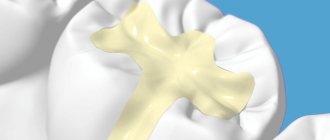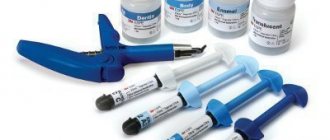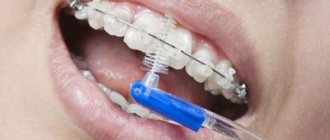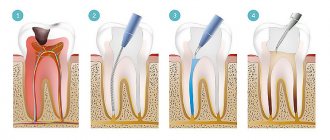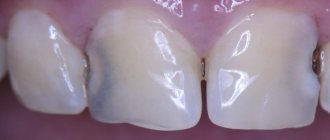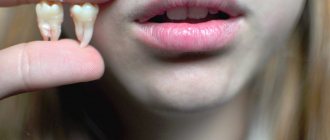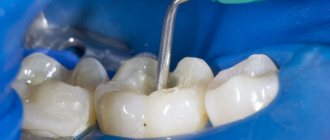Quite often, after an initial dental treatment session with a dentist, the patient returns home with a temporary filling. Many people are beginning to wonder why it is not possible to put in a long-term option to eliminate return visits and whether temporary fillings are simply a way for doctors to make extra money.
What is a temporary filling?
What does a temporary filling look like?
The standard temporary filling is one that is installed at an intermediate stage during treatment. This option is made from fairly cheap materials, which are subsequently removed quite easily.
Although the material used is flexible and will not dissolve, temporary sealing is not suitable for long-term use.
At the moment, there are various options for temporary plugs, divided depending on the material used. In its natural state, it has a very viscous and dense consistency, reminiscent of a paste.
The most popular temporary fillings:
- Children's colored temporary fillings
Dentin paste consists of sulfate and zinc, together with amalgam . Prevents liquid penetration and tooth staining;
- artificial dentin cannot be kept in the mouth for more than 3 days; it must be air-dried before placement in the tooth;
- Vinoxol can be kept in the mouth for up to 4 months. It has disinfecting properties and good strength after installation;
- in fixation of prostheses and for children, biocompatible cement is used - polycarboxylate ;
- A mixture of zinc oxide and eugenol shows sufficient effectiveness and disinfection .
The main difference between such a plug and a permanent one is the service life of the materials used. A permanent filling is made to be worn in the tooth for a number of years; it adheres tightly to the natural walls of the tooth, so it is quite difficult to get rid of it.
Temporary cork is looser and has virtually no adhesion, so they are not typically kept in the mouth for more than a week, although there are materials with a longer lifespan.
Once the mixture hardens on the tooth, it is difficult for the average person to distinguish what a temporary barrier looks like from a permanent one, since the differences relate not so much to appearance, but to other areas.
Temporary filling – reasons for its installation and how long you can wear it
Probably many people have had to deal with temporary fillings more than once. Treatment of caries, pulpitis, periodontitis, as well as prosthetics is rarely complete without the use of a filling procedure. Using a filling, the structure of the dental tissue is restored, as well as the appearance and all functions of the tooth.
However, usually during treatment, many dentists use two types of fillings - temporary and permanent. While permanent is usually used for long-term bone replacement, temporary is used only for short-term cavity protection. It usually contains inexpensive materials that can be easily cleaned later.
But it is still worth considering in detail the features of temporary filling.
In what cases are temporary fillings used?
The main purpose of temporary filling is diagnostics. For example, this filling can show how the nerve behaves during deep caries. And in the subsequent period, depending on the symptoms and results, the dentist determines and carries out the necessary treatment therapy.
Deep caries is the last stage of carious lesions; it destroys not only the enamel, but also the pulp.
Often a temporary filling is used during endodontic treatment. Usually, when placing a medicine into the root canals, in order to achieve the greatest effect, it is necessary to tightly close these canals. This procedure is performed using temporary filling.
Attention! Sometimes temporary filling is used during prosthetics. Typically, in these situations, the temporary material acts as an obstacle that protects against the penetration of saliva, food debris and other harmful microbes.
But unlike a permanent filling, a temporary filling is installed for a certain time. Often this time varies, but it should not be more than three weeks. In addition, temporary filling has one unpleasant feature.
Due to the fact that it is installed on a tooth that has not yet been fully cured, after installation a person may experience unpleasant painful sensations.
Usually the pain is not strong, sometimes it can only be at the first stage.
But it is best to consult a dentist when they appear, especially when the pain becomes stronger and stronger every day. It is also recommended to consult a doctor in cases where the filling begins to crumble, crumble, or even fly out.
Modern dentistry offers a wide selection of temporary fillings. They all differ in composition, hardening speed, purpose, and duration of use. Basically, the largest part of this material consists of calcium and components that are antiseptic.
A temporary filling is a method of treating caries in dentistry; its installation allows you to understand whether the tooth hurts after several days or weeks; if the patient does not complain of toothache, then the temporary filling is replaced with a permanent one.
There are several types of temporary fillings:
- Diagnostic;
- Used during endodontic treatment therapy.
The first type is used to assess the general condition of the pulp during caries. It helps to identify the main reason why pain occurs. During endodontic treatment, a temporary filling is the main barrier that prevents food debris, saliva and pathological microorganisms from entering the cavity.
Materials
Mostly, dentists use a one-component base during temporary filling. It is this composition that allows for simple use. Typically, the following types of one-component materials are used for temporary filling:
- Artificial and water-based dentin. The base contains powder and liquid. Distilled water is used as the liquid. The powder can be based on kaolin, zinc oxide and zinc sulfate. In order to obtain the desired consistency, the doctor mixes the liquid with the powder and stirs everything with a special glass stick;
- Oil dentin or dentin paste. This base contains kaolin, zinc oxide and zinc sulfate. Mixing the dry powder is done using peach or clove oil. Typically, dentin of this type is produced in a ready-to-cook form. The hardening time is from 2 to 3 hours;
- Cement material. This type of material is used for areas that require increased chewing and pressure. This material is usually made from the following types of cement - zinc phosphate, zinc eugenol and polycarboxylate cements. Basically, fillings of this type are used in the form of spacers;
- Polymer materials. This type of filling base appears in the form of light-curing one-component pastes. Their structure has a rubber-like consistency. Polymers are highly lightweight and have good adhesion to dental tissue, so they are easy to use. This material does not require additional processing; its hardening is carried out as a result of the use of a special light device.
In dentistry, one-component bases are used for temporary fillings, here are some of them: aqueous dentin (powder), dentin paste, cement (aqua-cem) and polymer (fluorax) materials.
How long can a temporary filling last?
The name itself, temporary, indicates that this material is not intended for long-term use. However, in the practice of many dentists, there were cases when patients were able to walk with a temporary filling for several years, from 5 to 10 years, but this is still an exception to the rule.
It is worth remembering that this material should never be used for permanent filling. But many patients are always interested in the question - how long can a temporary filling last, and for how long is it installed? Only a highly qualified doctor can answer this question.
It is he who determines the installation period of the temporary filling.
After installing a temporary filling, unpleasant painful sensations may occur; this is considered normal, but only if they are not severe. If the pain becomes constant and becomes aching, then in these cases you should consult a doctor.
After the examination, the dentist may prescribe pain medications. But in more serious cases, it can remove a temporary filling.
Using a temporary filling, you can isolate medications inside the tooth, which are installed in the dental canals for treatment.
Painful feelings can appear due to various factors:
- Inflammatory process of the nerve;
- The occurrence of a dental cyst;
- Violation of the integrity of the tooth;
- The appearance of periodontitis;
- Pulpitis.
Attention! Typically, a temporary filling takes between one and three weeks to be installed. Before installation, the doctor dries the canals and the bottom of the tooth. It is worth considering that some compositions require some time to harden. Therefore, doctors often recommend not eating or drinking liquids for several hours after installing this material.
Important rules to remember when installing a temporary filling
Whatever the problem with the tooth, it is worth remembering that a temporary filling is not the solution. It only temporarily replaces permanent filling. The doctor uses it only to identify the main cause that caused pain, caries and other pathological disorders. Therefore, you should not use this material for long-term use.
Sooner or later it will collapse and the cavity will open again. Needless to say, what harmful substances can get there along with food and saliva? As a result, you can completely lose a healthy tooth. Therefore, you must strictly adhere to the important recommendations of your doctor.
In addition, after installation, you should follow several important oral care tips:
- After installation, do not forget about thoroughly brushing your teeth and rinsing your mouth;
- Since fairly hard materials are used for temporary fillings, regular toothbrushes can be used for cleaning. Their bristles will not harm the material;
- The main thing when cleaning is not to be too zealous, it is better to do everything neatly and carefully;
- Don't overeat too solid foods. Nuts, crackers, and bones can cause serious harm to the temporary filling, so it is better to avoid eating this food during the period of its installation.
Installing a temporary filling is a necessary step in tooth treatment. It helps to identify the main cause of pain and pathological processes occurring in the tooth. The main thing after its installation is to strictly follow all the doctor’s recommendations; you should not keep it longer than prescribed. First of all, this is temporary material, which is intended for a period of no more than three weeks.
Source: https://ZubNeBoley.ru/lechenie/vremennaya-plomba-zachem-stavyat-i-skolko-hodit/
Why do they put it on?
If necessary, the dentist may decide to place a temporary filling on the tooth until treatment and finishing are completed.
| Causes | Peculiarities |
| Making a tab | Making an inlay usually takes several days; a temporary filling covers the damaged tooth during this time |
| Nerve removal | Removing a nerve from a tooth is quite painful, so it becomes a way to monitor a diseased tooth. |
| Channel cleaning | Helps to put medicine into the cleaned canal |
| Pulpitis | Together with the temporary filling, a drug is placed that promotes necrotization of the pulp and prevents decay |
| Making decisions about subsequent treatment | Often, a dentist cannot cure a tooth in one session. This may happen due to lack of time or the severity of the case. Serves as a way to preserve canals from contamination between treatment sessions |
| Purulent periodontitis | After removal of pus from the pulp, permanent filling is not recommended, since the risk of re-inflammation is incredibly high. Used as canal cupping |
Can a tooth hurt under a temporary filling for other reasons?
Untreated or worsened inflammation at the exit of the root canals after visiting the dentist causes discomfort. It's clear. After all, the inflammation will not go away immediately; even with the correct actions of the doctor, it takes time. What if there was no inflammation, but the temporary filling is in place and the tooth aches, and there is a feeling that something is bothering you?
Possibly an allergic reaction:
- on medicine left during treatment;
- or onto a composite that closes the cavity.
It happens that after a temporary filling a tooth hurts, what should you do if the doctor thinks there is no reason to worry? You just need to wait out the painful period, which normally lasts a couple of days after being introduced into the canals.
For diagnostic purposes, a temporary filling was placed on the tooth,
Often, when a temporary filling is placed, the tooth hurts, it aches, this may indicate that there was an infection inside the canals and the medicinal composition introduced into the pulp cavity is working. But! the pain should not get worse. The appearance of jerking pain is also unacceptable.
Due to the reasons for which a temporary composite is required, provided that the dentist considers that there is no cause for concern, a period of observation of the tooth is necessary. And even if a temporary filling is placed and the tooth aches, sometimes this will be the norm.
See also:
- How many days can you walk with a temporary filling?
- What to do for acute toothache;
- Internal tooth whitening.
Drugs placed under a sealed barrier
The service life of the temporary plug initially depends on the drug put into it:
- Arsenic is used to kill the nerve in the tooth for subsequent depulpation. For this purpose, a number of other toxic substances are used, which help not only to painlessly remove the nerve, but also to subject the entire pulp tissue to necrosis;
- To treat periodontitis or pulpitis, antiseptics or antibiotics are used to relieve inflammation. Such a filling is usually worn for about 20 days until the infection is completely suppressed.
Correct positioning
Installing a temporary filling
Often complex treatment of pulpitis or periodontitis cannot be performed in a single session:
- During the initial treatment, the dentist usually diagnoses the diseased tooth and opens it with drilling.
- The tooth is processed, a temporary expansion of the root canal occurs to remove pus or damaged areas of the tooth.
- After this, cleansing, removal of nerves and other manipulations during treatment occur.
- A temporary filling is placed over the exposed tooth to prevent germs from entering the open cavity.
Such cleaning of the canals may be required more than once, so the doctor must wait until the patient is pain-free before placing a long-term filling. Once the toothpaste has hardened, you should handle it with care as it is usually quite fragile.
In the first hours, it is not recommended to eat food or chew gum. During treatment, switch to a toothbrush with very soft bristles.
How long do you need to wear a filling?
You can wear a temporary filling for a period of one day to six months. The maximum validity period of Vinoxol, the strongest and most durable of them, is exactly 6 months. However, such fillings are placed quite rarely, and in general their shelf life depends on their original purpose.
If medicine was placed under the cork, the period will be from 3 to 20 days. In general, the timing of removing the temporary barrier depends entirely on the treating dentist.
Important! You should not wear a temporary filling in your mouth for a longer period than recommended by your doctor, even if it is in perfect order.
What are the causes of pain
Let us outline a number of reasons that most often cause discomfort and pain symptoms:
- if a temporary filling in a tooth hurts when pressed and at night, most likely you are worried about the remains of the inflamed pulp, which have not yet had time to dissolve under the influence of arsenic;
- If your tooth ache all the time under a temporary filling, there is a possibility of an allergic reaction to the cementing substance. If there is no severe irritation, headaches or other manifestations, take a pain reliever, otherwise it is better to try to carefully remove the “temporary” on your own before it causes even more harm, close the hole with a cotton swab and make an appointment with the dentist as soon as possible;
- the doctor prescribed you a number of procedures that need to be performed at home, but you didn’t even look at the list? This may also be the cause of the pain reactions that appear;
- Another reason for pain with a temporary filling may be, paradoxically, its absence. Check, perhaps it just fell out while eating, and now all external irritants are in direct contact with the soft tissues of the tooth? In this case, an infection could enter the depressurized tooth cavity, causing inflammation.
Removal and replacement for permanent
Removing a temporary filling
Removing the temporary plug is a mandatory procedure before installing a permanent structure. Usually removal is done after the end of treatment, removal of the nerve, so it does not cause pain. There may be slight discomfort, but it goes away after a couple of minutes.
After removing the filling, the dentist must clean the root canals and treat the tooth with an antiseptic. After all measures have been taken, the tooth can be considered ready for permanent filling.
